Detailed Risk Assessments Control Costs and Avoid Delays
As infrastructure initiatives grow in size and complexity, effective risk management plays an increasingly significant role in capital project success.
Comprehensive risk assessments involve collecting diverse perspectives, engaging with subject-matter experts, scoring and prioritizing the identified risks, and using the analysis to inform project strategy.
Assessing and monitoring risk early in the project can pay dividends, helping owners avoid scope changes, contain costs, stay on schedule, and improve project outcomes.
Seeing the Big Picture
Large-scale capital projects come with inherent uncertainties — from underground utility conflicts to land acquisition disputes to the impacts of extreme weather. Despite these risks, conventional assessments often lack sufficient rigor or do not include key stakeholders when assessing risk factors. Even more troublesome, risk assessments frequently get skipped altogether.
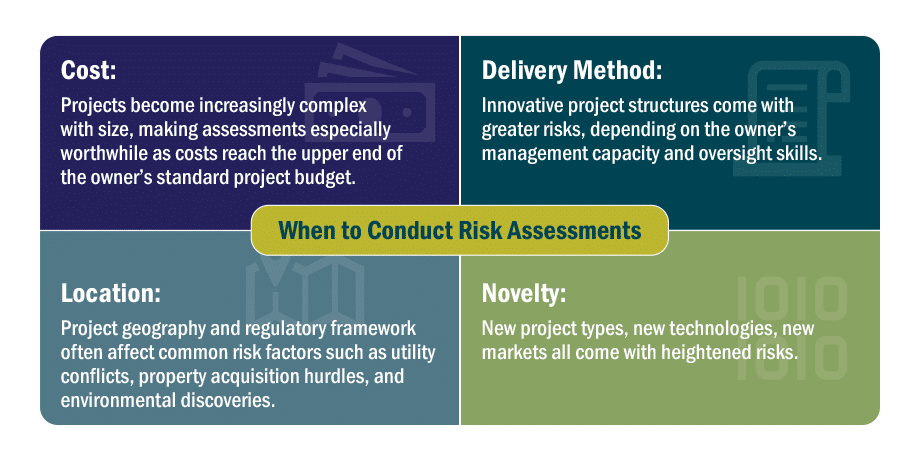
By using objective data and analysis tools, project managers can produce risk assessment data that help stakeholders prepare for potential risks, developing mitigation strategies that inform critical decisions when difficult circumstances arise.
Identification of project risks and opportunities requires an unbiased, holistic approach. Project managers who gather project stakeholders and subject matter experts ensure a wide range of perspectives and expertise are included in the risk-identification process. Creating a diverse group of contributors can help compensate for capacity concerns if the project team lacks experience navigating project complexities.
Subjective Risk Scores
Identifying and acknowledging the existence of a group of risks, while a significant first step, does not fully clarify the impact that each risk will have on the project budget and schedule.
A qualitative risk analysis identifies the sources of individual risks, evaluating impacts and potential implications. Qualitative assessments scrutinize risks to determine likelihood of individual risks as well as the estimated impact — high, medium or low.
A probability-impact matrix is a common tool used in the facilitation of risk assessment meetings, enabling participants to visualize risk likelihood and associated impacts. Compared to a simple risk register, qualitative assessments provide a more robust view, identifying factors that are the greatest contributors to project uncertainty.
Risk workshop facilitators should take great care to ensure the risk scoring remains objective. Introduction of bias can easily corrupt the overall risk scoring.
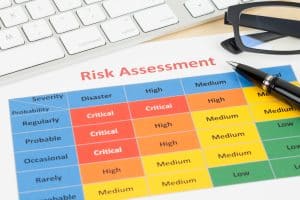
Finding the Unknowns with Risk Modeling
Qualitative risk assessments still only provide a basic snapshot of overall risk. By developing a quantitative measure of risk, project managers can identify and prioritize risks, producing insights into the combined aggregate impact on project budget and schedule. Project risk can even be visualized and tracked over time.
Best practice is to perform a thorough probabilistic risk analysis. Developing a model using techniques such as a Monte Carlo simulation, project teams can produce a simulation of potential project outcomes. The cumulation of these simulations provide a means to quantify and to evaluate aggregate effects of risk.
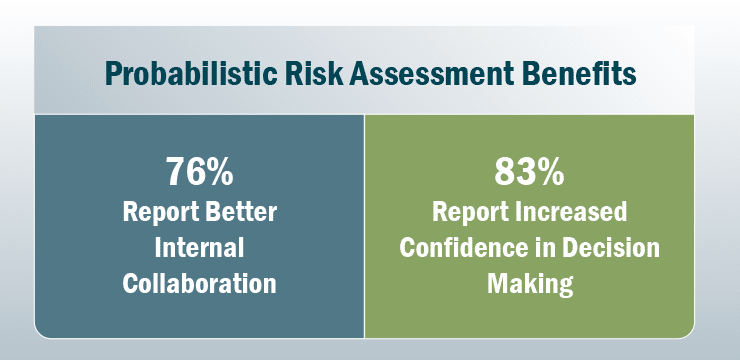
Source: Construction Industry Institute
Going an extra step, sensitivity analyses can identify the most-significant risk impacts for the project. This allows project managers to develop risk-mitigation strategies and allocate management resources based on specific actions that yield the greatest overall project benefits.
Analyze Risk, Rinse and Repeat
Completion of the quantitative analysis does not mark the end of the risk-management process. Teams must analyze the modeling results to determine whether project contingencies are adequate to project risks, while reflective of funding constraints and timelines.
Additional steps may include:
- Adjust budgets to include adequate contingency values.
- Develop risk-response and contingency-management plans, creating internal and external risk-management strategies for the use of contingency through the project life cycle.
- Establish a working group to monitor and control the risk-management plan.
- Reassess risks and revise the plan on a periodic basis — monthly, quarterly or annually — depending on project circumstances.
Risk Assessment Benefits
Performing a detailed risk assessment involves the project-management team’s time and cost.
When stakeholders perceive that risk assessments are prohibitively expensive, they often choose to skip entire steps in the process. The Construction Industry Institute (CII) at the University of Texas in Austin found only 28 percent of surveyed project owners and contractors regularly conduct probabilistic analyses, for instance.
Overlooking the risk assessment can often be a regrettable decision. Here are a few reasons why detailed risk assessments should be incorporated into all major projects.
Risks Do Not Go Away
Even the most comprehensive project budgets and schedules may still be insufficient to accommodate risks. Opting not to conduct a risk assessment will leave project managers uninformed of potential risks — sometimes until change orders and/or schedule overruns become unavoidable.
Better Management of Costs and Schedule
Many agencies use general risk-management strategies, such as adding a 10-percent contingency to the construction budget. Unfortunately, this one-size-fits-all risk response generally leads to budget shortfalls as well as costly and time-consuming change orders. Risk-informed project managers have higher than average chances of delivering projects on schedule and on budget.
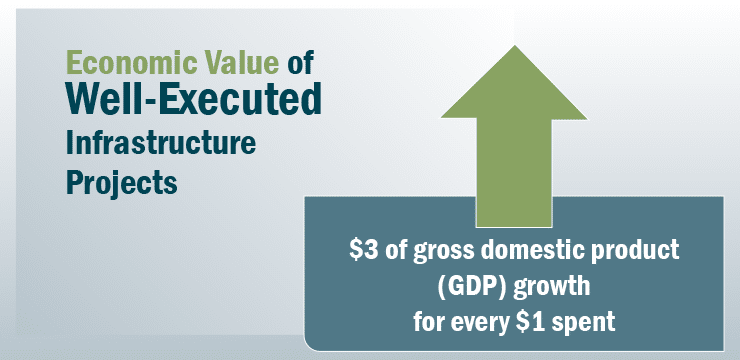
Source: Business Roundtable
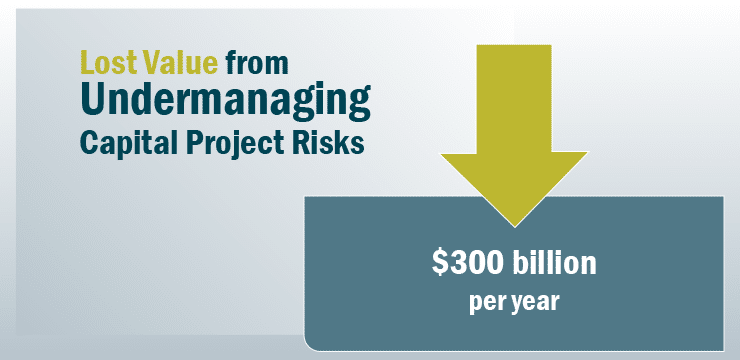
Source: McKinsey
Track Progress Over Time
Managers and owners can remain continually informed through periodic review and re-analysis of the data and assumptions of a project’s risk assessment. Risk-informed project managers can identify and adjust risk-response strategies accordingly.
Develop More Effective Capital Programs
Project owners can leverage risk assessments tools to determine which projects in a portfolio require prioritized attention, directing resources to the greatest risk factors. Minimizing risks can improve confidence among the public as well as investors, helping to attract and mobilize sources of public and private financing.
Manage Risk. Pack the Umbrella.
According to the American Society of Civil Engineers (ASCE), the United States plans to spend at least $3.4 trillion on infrastructure systems by 2029. Careful consideration of project risks is vital to ensure prudent management of constrained public funds, to deliver the economic growth potential of public-infrastructure projects, and to maintain public support for large capital investments.
Just as weather forecasts provide a tool to prepare us for stormy weather, risk assessments inform whether a project is prepared for future uncertainties. When implemented systematically, risk assessments provide value throughout the project’s life cycle, improving resiliency to elements that could otherwise threaten to expose project vulnerabilities — or worse — drown the project for good.
As the scale and complexity of capital projects continue to grow, proactively identifying and responding to risks creates tremendous value, ultimately demonstrating whether funding levels and construction schedules are likely to deliver project success.


